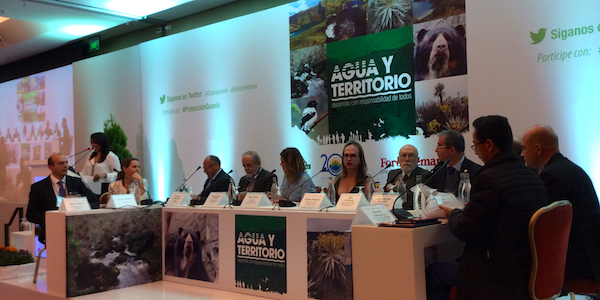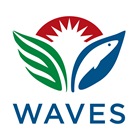The forum participants analyzed the water and páramo situation in Colombia using recent information provided by the Institute of Hydrology, Meteorology and Environmental Studies (IDEAM). Páramo refers to the ecosystem of the regions above the forest line in South America. According to this information, the water potential of Colombia is three times the Latin American average and six times the world average.
However, they said poor management and distribution hampers reaching that potential. According to IDEAM, 110 municipalities with an estimated population of 17.5 million experience critical water conditions caused by high demand, contamination, vulnerability to shortages, climate variability and regulatory shortcomings. The total population of Colombia is approximately 49 million.
“The water situation in Colombia is a developmental as well as an ecological challenge. These variables cannot be dissociated and require a long-term management plan,” said Jimenez.
Julio Carrizosa, one of Colombia’s prominent environmental scientists, warns that 65 years of domestic armed conflict makes enacting and implementing policies for sustainable management of resources even harder. “The ecological function of land (the environmental services it provides) should be considered once, and if, a peace accord is signed,” he said.
Providing water to more than 10 million people as well as searching for different watersheds besides that of Chingaza is an enormous challenge for the Empresa de Acueducto y Alcantarillado de Bogota, the city’s water utility. Additionally, working with the communities and inhabitants of the páramo for its protection is a demanding task that requires the coordination of local, regional and national efforts.
According to Caroline Merle from La Office National des Forets (Onf Andina), no matter how many difficulties there are, older traditional strategies could prove efficient when correctly applied to new development scenarios that emerge.
The Role of Natural Capital Accounting
“I believe that natural capital accounting is the best option we have at the moment for understanding the economic and ecological balance. It is a fundamental tool for monitoring how territory is changing,” said Brigitte Baptiste, director of the Alexander Von Humboldt Institute, a leading research institute on biodiversity in Colombia linked to the Ministry of Environment and Sustainable Development. “The WAVES (Wealth Accounting and the Valuation of Ecosystem Services partnership) methodological approach has been standardized internationally which enables us to share lots of information.”
Bancolombia, one of the larger players in the financial sector, highlighted the importance of working with communities to conserve strategic ecosystems through recognizing and valuing the environmental services they provide.
“When we have globalized information at a national level it allows us to immerse ourselves in the finer details and understand what kinds of natural capital we have. It also helps us carry out theoretical exercises around putting an economic value on ecosystems,” said Franco Alexander, Bancolombia’s sustainability manager.
Henry Alterio, Colombia country coordinator for WAVES, said that natural capital accounting is an objective tool for helping to draft policies aiming to promote the sustainable management of resources. “If you have economic information on the natural riches common to all, it is then possible to know how accountable we are. People could use the data to hold local authorities accountable in relation to how much natural resources increase or decrease,” said Alterio.
WAVES work in Colombia initially focused on developing NCA for three pilot watersheds (Tota Lake and the Chinchiná and Alto Suárez rivers), but work has expanded to include integrated national-level accounts for water, forests and land.
The director of the World Wildlife Fund (WWF) in Colombia, Luis German Naranjo, also attended the forum, along with representatives from other private research institutes and academic establishments.

